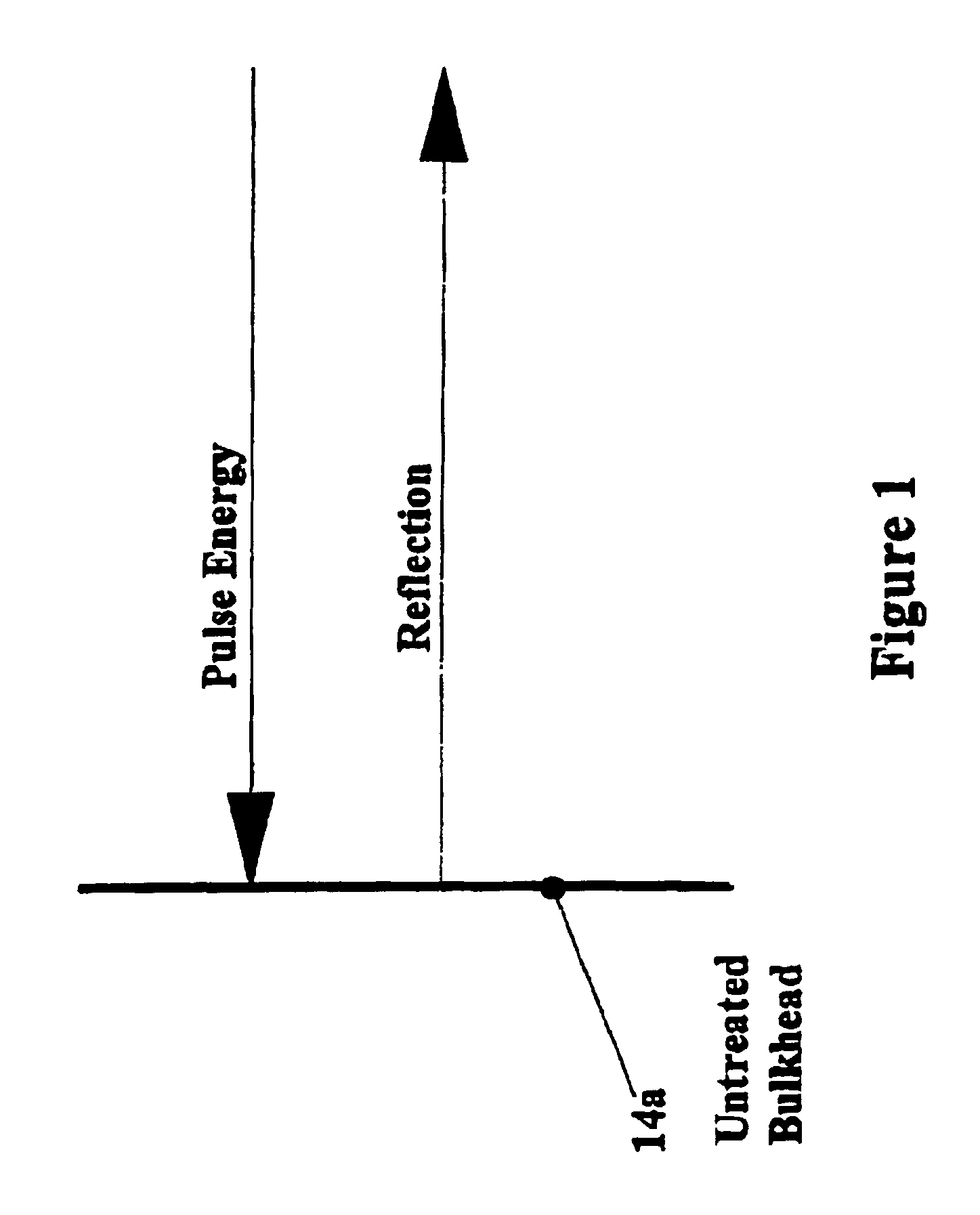Retrofitting vessels to deflect radar signals
a technology for retrofitting vessels and radar signals, applied in the direction of antennas, weapons, offensive equipment, etc., can solve the problems of increasing the cost of incorporating such designs, increasing the risk of detection and possible attack of air-borne and water-borne defence vessels, and increasing the risk of being damaged by the impact of the damage,
- Summary
- Abstract
- Description
- Claims
- Application Information
AI Technical Summary
Benefits of technology
Problems solved by technology
Method used
Image
Examples
Embodiment Construction
The present invention will now be described with reference to particularly preferred embodiments, in which:
FIG. 1 is a schematic of the reflection pattern of a vessel without an array according to the invention;
FIG. 2 is a schematic of the reflection profile of the bulkhead of a vessel structure to which one element of an array according to the invention is attached; and
FIG. 3 is a cut-away perspective view of a side of a vessel to which an array according to the invention has been attached.
Turning to the drawings, FIG. 1 shows a vertical surface 14a comprising, symbolically, a bulkhead of a vessel structure. In this arrangement a substantially horizontal incident radar signal (designated in FIG. 1 as "pulse energy") string vertical surface 14a (being normal to the incident radar signal) is reflected from the vertical surface 14a directly back to the radar source (not shown). It will be appreciated that a consequence of this arrangement is that the surface by virtue of its cross-sec...
PUM
 Login to View More
Login to View More Abstract
Description
Claims
Application Information
 Login to View More
Login to View More - R&D
- Intellectual Property
- Life Sciences
- Materials
- Tech Scout
- Unparalleled Data Quality
- Higher Quality Content
- 60% Fewer Hallucinations
Browse by: Latest US Patents, China's latest patents, Technical Efficacy Thesaurus, Application Domain, Technology Topic, Popular Technical Reports.
© 2025 PatSnap. All rights reserved.Legal|Privacy policy|Modern Slavery Act Transparency Statement|Sitemap|About US| Contact US: help@patsnap.com



